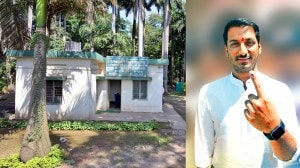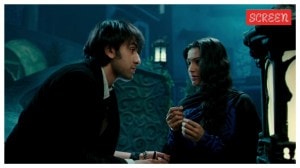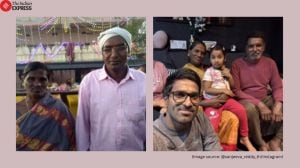‘Temple trace beneath Babri’
The Archaeological Survey of India has claimed that there is evidence ‘‘indicative’’ of remains associated with ‘&#...

The Archaeological Survey of India has claimed that there is evidence ‘‘indicative’’ of remains associated with ‘‘temples of North India’’ at the Babri Masjid site from the 10th Century AD, predating the mosque by at least 500 years.
The ASI’s report was submitted—after six months of excavation—in the Lucknow special bench of the Allahabad High Court hearing the title suits. While the Sangh Parivar cheered the findings today, the All India Muslim Personal Law Board called the report’s conclusion ‘‘vague, unsubstantiated’’ and said it would file its objections within the stipulated six-week deadline.
Covering a sweep of seven periods since 1000 BC, the ASI says that its conclusion is based on ‘‘archaeological evidence of massive structure just below the disputed structure (Babri Masjid) and evidence of continuity in structural phases from the 10th Century onwards up to the construction of the disputed structure…’’ This ‘‘massive structure,’’ the ASI claims is one with ‘‘stone and decorated bricks as well as mutilated sculpture of divine couple and carved architectural members including foliage patterns…doorjamb with semi-circular pilaster, broken octagonal shaft of black schist pillar, lotus motif, circular shrine having pranala (waterchute) in the north, fifty pillar bases…’’
Incidentally, this summer five historians, including Suraj Bhan, had said that this structure below the Babri was a mosque.
Contacted today, Bhan said: ‘‘What the ASI calls evidence of a temple like pillar bases could belong to the period after Babri Masjid. The massive structure is a Sultanate period mosque.’’
The ASI excavation covers seven ‘‘periods’’ starting from 1000 BC till the Medieval-Sultanate period which is 12th AD-16th AD. The ASI based its survey on the report of Ground Penetrating Radar Survey which mentioned ‘‘anomalies’’ at the site.
The ASI dug a few more trenches to complete its excavations.
According to a summary of its findings:
• The study began at the deepest level of the dig belonging to 1000 BC to 300 BC, confirmed after Carbon-14 dating. At this level, the ASI found ‘‘no structural activity’’ but discovered ‘‘terracotta figurines of female deities showing archaic features’’ and Northern Black Polished Ware, typical of the period.
• The next level, Period II of Sunga horizon, 2nd century BC to 1st century BC, yielded terracotta mother goddesses and elementary construction, the ASI claimed.
• Period III belonged to the Kushan period, 1st century AD to 3rd century AD: ‘‘large-sized structures,’’ the report states.
• Period IV, the Gupta period, from 4th century AD to 6th century AD ‘‘did not bring any change in building activity,’’ the ASI found.
• Period V, the post-Gupta-Rajput period from 7th Century A.D. to 10th century AD: ‘‘Among the exposed structures, there stands a circular brick shrine which speaks of its functional utility for the first time…Though the structure is damaged, the northern wall still retains a provision for pranala (waterchute) which is a distinct feature of contemporary temples already known from the Ganga-Yamuna plain.’’
• Period VI, early medieval period, 11th century AD to 12th century AD: ‘‘A huge structure, nearly 50 metre in North-South orientation…which seems to have been short-lived…On (its) remains was constructed a massive structure with at least three structural phases and three successive floors attached with it,’’ the report states adding that this was ‘‘different from residential structures’’ and remained in existence even during the next period.
• Period VII: ‘‘It was on top of this construction during the early 16th Century A.D., the disputed structure (Babri Masjid) was constructed directly resting over it,’’ the ASI report states.
‘‘The centre of the central chamber of the disputed structure falls just over the central point of the length of the massive wall of the preceding period which could not be excavated due to presence of Ram Lala at the spot in the make-shift structure,’’ the report notes.
Terracotta lamps were found at this level, the ASI claims, and evidence to ‘‘signify the place where some important object was placed.’’



- 01
- 02
- 03
- 04
- 05




























